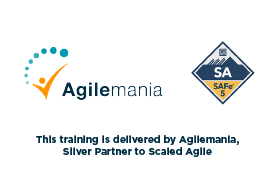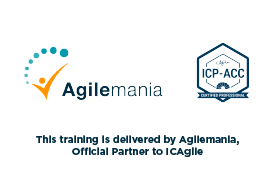
1:1 Coaching
24*7 Support
CloudLabs
High Success Rate
Globally Renowned PSTs Trainer
Real-time code analysis and feedback
Course Description
Learning Objectives
This course teaches participants the following skills:
- Plan and implement Google Workspace authorization and access
- Manage user, resource, and Team Drive lifecycles
- Manage mail
- Monitor organizational operations
- Control and configure Google Workspace services
- Configure and manage endpoint access
- Advance Google Workspace adoption and collaboration
Certification Curriculum
 Planning and implementing Google Workspace authorization and access
Planning and implementing Google Workspace authorization and access
- 1.1 Implementing authorization policies. Considerations include:
Basic user security controls (e.g., password length enforcement and 2-Step verification)
Security aspects of identity, perimeter security, and data protection - 1.2 Using Google Workspace as a service provider. Considerations include:
Configuring third-party SSO for Google Workspace
Integrating with third party for provisioning - 1.3 Using Google Workspace as an identity provider. Considerations include:
Configuring and managing SSO for common third-party applications
Configuring and managing provisioning - 1.4 Managing access to third-party applications and sites. Activities include:
Granting API access to applications that need access
Revoking third-party OAuth access
Removing connected applications and sites
 Managing user, resource, and Shared Drive lifecycles
Managing user, resource, and Shared Drive lifecycles
- 2.1 Managing users. Considerations include:
Adding users (e.g., individual, bulk, automated)
Removing users (e.g., suspending, deleting, recovering)
Transferring user data from one user to another
Editing user attributes (e.g., renaming, passwords, aliases)
Creating administrative roles (e.g., default roles, custom roles)
Managing user licenses (e.g., licensing models, Google Workspace SKUs)
Troubleshooting conflicting accounts
Implications of current Google Workspace APIs to development efforts
Using Google Apps Script to automate tasks - 2.2 Synchronizing data in your Google domain with your Microsoft® Active Directory® or LDAP server. Considerations include:
Integrating LDAP with Google Workspace
Configuring and troubleshooting GSPS and GCDS
Implications of current Google Workspace APIs to development efforts
Using Apps Script to automate tasks - 2.3 Managing organizational structure. Considerations include:
Designing efficient organizational unity (OU) structure based on business needs
Assigning users to relevant OUs
Modifying OU policies
Implications of current Google Workspace APIs to development efforts
Using Apps Script to automate tasks
Managing and verifying domains
Using Google Takeout to export data
Managing company profile settings - 2.4 Managing groups. Considerations include:
Configuring Google Groups
Adding users to groups
Implications of current Google Workspace APIs to development efforts
Using Apps Script to automate tasks - 2.5 Managing contacts. Considerations include:
Creating contacts
Sharing contacts
Implications of current Google Workspace APIs to development efforts
Using Apps Script to automate tasks
 Managing Mail
Managing Mail
- 3.1 Managing mail-related DNS settings. Activities include:
Managing domain MX records
Managing domain SPF records
Managing domain DKIM records
Managing domain DMARC records - 3.2 Diagnosing and resolving mail routing issues. Considerations include:
Analyzing mail flow
Analyzing email headers
Email log search
Disparate email services
Using Google Workspace Toolbox - 3.3 Configuring and managing security, compliance, and spam rules. Activities include:
Configuring attachment compliance
Configuring blocked senders
Configuring email allow list
Configuring objectionable content
Configuring phishing settings
Configuring spam settings
Managing admin quarantine
Configuring secure transport compliance
Configuring safety settings - 3.4 Configuring mail routing rules. Considerations include:
Configuring split and dual delivery scenarios
Implications of integrating third-party mail services
Configuring routing rules
Configuring recipient map
Configuring non-Gmail mailbox
Configuring hosts - 3.5 Configuring general mail settings. Activities include:
Configuring append footer setting
Configuring forwarding
Configuring SMTP relay
Enabling email delegation for an OU
Disabling IMAP and POP
Managing Gmail archives
 Controlling and configuring Google Workspace services:
Controlling and configuring Google Workspace services:
- 4.1 Administering Google Workspace Services. Activities include:
Managing rollout of new Google functionality to end users
Troubleshooting Google Workspace services (e.g., performance issues for services suite, Google Workspace apps for OUs)
Configuring services - 4.2 Configuring and managing Google Workspace core apps. Considerations include:
Contacts/Directory (e.g., ability to make updates to Directory services or contact support or contacts sharing settings)
Calendar (e.g., Calendar sharing settings and delegations, Calendar resource management, Calendar invitations sent to Groups, troubleshooting calendar interoperability)
Drive/Shared Drive (e.g., storage limitations in Basic plan)
Groups (e.g., creating and editing groups, banning group members from posting to the group)
Chat/Meet (e.g., disabling Hangouts voice calls for organization, designing video conferencing integration of Hangouts with different end points, disabling bot access on new Hangouts chat)
Sites (e.g., usage and implementation) - 4.3 Managing services integrations. Activities include:
Integrating third-party marketplace apps to specific OUs in Google Workspace
Evaluating Marketplace and Connected app landscape
Adding SP to Cloud Identity - 4.4 Implementing automation. Considerations include:
API permissions
Able to interact with APIs and lightweight scripting
Service Accounts
 Configuring and managing content access
Configuring and managing content access
- 5.1 Configuring and managing Vault. Activities include:
Setting retention rules (e.g., setting retention rules, placing legal holds, searching your domain’s data by user account, OU, date, or keyword, exporting data for additional processing and review, auditing reports)
Holding and exporting data
Running Vault audit reports - 5.2 Configuring and managing Drive and Shared Drive. Activities include:
Configuring sharing settings (e.g., updating sharing settings to external domains, controlling file access with Information Rights Management)
Managing Drive folder structure (e.g., using Google Drive native file formats, recommending Google Drive and Shared Drive file structures) - 5.3 Ensuring compliance with regulatory requirements. Activities include:
Scanning email with Data Loss Prevention (DLP)
Managing content compliance rules - 5.4 Implementing and monitoring data security. Activities include:
Configuring security and data region
Monitoring security health check
Configuring security settings
Creating security records
Designing security integration and addressing objections. - 5.5 Managing third-party applications and access. Activities include:
Backing up solutions of Google Workspace data for compliance
Allow list OAuth apps
 Configuring and managing endpoint access
Configuring and managing endpoint access
- 6.1 Configuring mobile devices. Considerations include:
Company-owned vs. personal devices
Configuring personal device settings (e.g., password, Android, iOS, advanced, device approvals, app management, insights) - 6.2 Provisioning, deprovisioning, and enabling Chrome devices
- 6.3 Managing Google meeting room hardware (e.g., provisioning, deprovisioning, hanging up, calling, rebooting)
- 6.4 Managing Chrome apps, extensions, and Android apps
- 6.5 Configuring network settings (e.g., Wi-Fi, Ethernet, VPN, certificates, and general)
 Monitoring organizational operations
Monitoring organizational operations
- 7.1 Setting up and using reports (e.g., creating usage reports, measuring adoption and satisfaction)
- 7.2 Setting up and using audits (e.g., auditing document sharing, auditing Gmail and drive, auditing users)
- 7.3 Interpreting report and audit data and taking appropriate action. Examples include:
Troubleshooting and escalating support issues to Google Partner support or Google Engineering
Identifying data leakage scenarios and implementing ways to prevent
Streaming audit data to BigQuery - 7.4 Managing alerts (e.g., suspicious logging activity, apps outages, TLS failure, user deleted)
 Advancing Google Workspace adoption and collaboration
Advancing Google Workspace adoption and collaboration
- 8.1 Building business solutions and processes. Examples include:
Creating simple processes using Apps Script
Creating team project sites - 8.2 Staying up-to-date with Google Workspace. Examples include:
Using Google and partner support channels
Accessing and interpreting Google Workspace roadmap
Staying aware of new features and functionality in Google Workspace
Prerequisites
While there are no specific prerequisites to achieving this certification beyond passing the Professional Collaboration Engineer exam, it is worth noting that experience with the required skills is key to a successful experience. Having passed the Associate Cloud Engineer exam and the G Suite exam and achieved the corresponding certifications, while not mandatory, will help you prepare for this level since they introduce a number of technologies covered in the GC Professional Collaboration Engineer exam.
Download Brochure
We offer professional collaboration engineer training in Singapore aimed at beginning professional collaboration understanding that can lead to your professional collaboration engineer certification. Download the brochure and check the different Focus Areas covered within these 2 days of training.
Certification Assessment
The exam guide contains a complete list of topics that may be included on the exam. Review the exam guide to determine if your skills align with the topics on the exam.
- High Success rate
- Join Our Dynamic Community
- Training from Recognized Trainer
- Post-workshop support by the Coaches
Testimonials
Our clients praise us for our great results, personable service, expert knowledge, and on-time delivery. Here are what just a few of them had to say:
Training FAQ's
In the Machine Learning Training, you will learn how to write distributed machine learning models that scale in Tensorflow, scale out the training of those models and offer high-performance predictions
The duration of Machine Learning Training is two-days.
Data Engineers and programmers interested in learning how to apply machine learning in practice or anyone interested in learning how to build and operationalize TensorFlow models can apply for Machine Learning Training.
With Machine Learning Training with TensorFlow Certification, you can strengthen your cloud knowledge, earn a digital certificate, and start preparing for an industry-recognized Google Cloud certification.
Participants should have experience coding in Python, knowledge of basic statistics, and knowledge of SQL and cloud computing.






